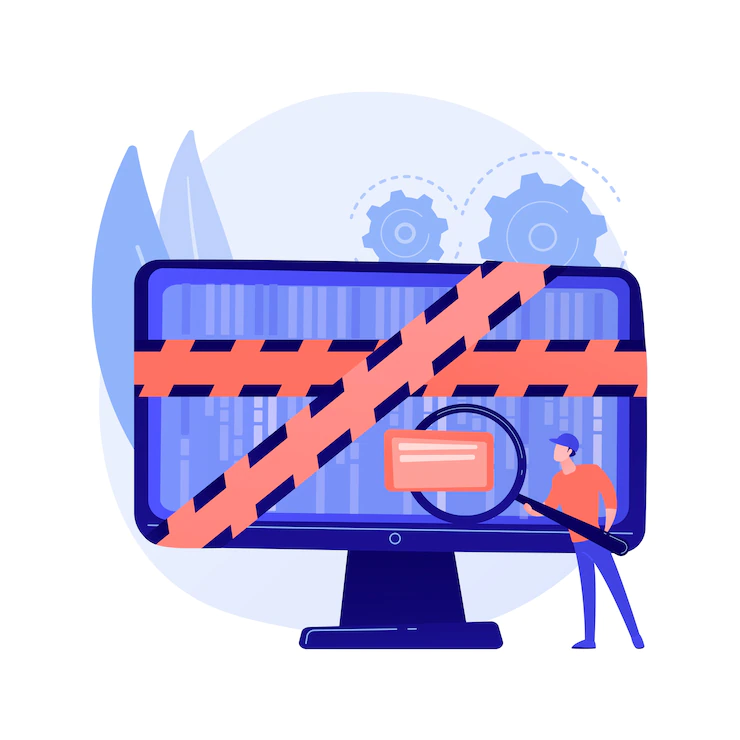Because of movies and pop culture, people often romanticize digital forensics. When they think of this line of work, they picture inaccurate ideas of digital forensic investigators effortlessly enhancing blurry photos as if by magic. Or instantly manage to type the correct password and encryptions with no problem.
This misunderstanding often leads to someone expecting law enforcement agencies to do the same process. But in fact, the overall operation of digital forensics requires a lot of time to uncover the truth.
Those in the computer or digital forensic investigation industry must have higher education related to this field. To ensure passing rates, some undergrads take online digital forensics courses to add to their tech knowledge. While these courses may not come from an accredited learning program, it adds a talking point to their potential employers.
Here are some important details below to get a more accurate perspective of digital forensics.
What is digital forensics?
Digital forensics is a new branch of forensic science that preserves, restores, extracts, analyzes, and documents computer data tied to a criminal investigation. These types of crimes could mean internal breaches or insider threats in a company.
This branch of forensic science provides the forensic team with evidence from computer systems, mobile phones, servers, or networks to solve technology-related cases. This digital evidence is later presented in a court of law if necessary.

The history of digital forensics
Throughout the history of computer forensics, law enforcement had little understanding of dealing with technology-driven crimes. However, during the late 1970s to 1980s, federal law enforcement representatives who were computer hobbyists formed a team to tackle this global problem.
They were concerned with data usage because there was a rise in digital documentation. Since this work was far too tedious for the Federal Bureau of Investigation, they launched Magnetic Media in 1984 as the official digital forensics program. This program aimed to find child pornography offenders. Since then, the program has grown to include 31 specialty areas which also includes developing porn blockers that prevent access to certain websites.
The first computer-related crime act was established in 1978 in Florida. This law states that unauthorized manipulation or removal of data from a computer is a Third Degree offense. So anyone who copies, extracts, or destroys any computer network system is subject to 5 years imprisonment. They are also fined up to $5,000, depending on their case.
Cliff Stoll is a well-known digital forensic investigator. He was trying to outwit a tenacious hacker who wriggled his way into the military and industrial computer networks of the US, EU, and East Asia. So, Stoll devised a honeypot trap to lure the cybercriminal. When he and his team captured the culprit, they identified him as a Soviet KGB, Markus Hess.
While law enforcement uses digital forensics to find criminals, companies use it to monitor employees. However, due to persistent cyber crimes in the 1990s, forensic investigators and tech support in the UK established standard protocols and techniques when conducting an investigation. And the term computer forensics was adapted in academic literature.
With the evolution of technology, the science of digital forensics matured alongside its guidelines and best practices. So in the 2000s, the Scientific Working Group on Digital Evidence developed "Best Practices for Computer Forensics" because there was a growing need for standardization.
How is digital forensics used in investigations?
Digital computer forensics examiners need to understand how computers communicate with each other to help uncover a crime. Their work entails helping to recover, analyze, and preserve data or networks to find the motive behind a crime and identify the main culprit.
Cybercriminals often leave digital footprints, and it's the digital forensics investigator's responsibility to retrieve the critical data to solve a crime.
From a business standpoint, digital forensics technology helps find digital evidence of moved, deleted, and tampered data from unexpected cyberattacks. It also assists in fixing the mess after bad things happen to a company.
What are the advantages of digital forensics?
- After someone hacks an individual or an organization's data, computer forensics' job is to improve security hygiene to prevent these events from happening again.
- Digital forensics investigations help tackle internal company policy violations while protecting the organization's money.
- While cyber crimes can happen anywhere, digital forensics can track down cybercriminals from any location.
- Digital forensic analysis aids law enforcement personnel in investigating internal breaches within a company's perimeter.
- As technology evolves, digital forensics safeguards evidence before it becomes outdated and saves the integrity of any computer system.
What are the disadvantages of digital forensics?
- Extracting, analyzing, and preserving data takes up much of a company's budget.
- Becoming a digital forensics examiner requires extensive computer and tech knowledge.
- Suppose the tools used for a digital forensics investigation are not up to the standards of the court of law, and the digital evidence may be disapproved.
- When a digital forensics examiner doesn't have adequate experience, they may offer undesirable results.
- In some cases, a digital forensics specialist pretends to aid an organization but has ulterior motives. For example, they may steal confidential and sensitive information.
What are the types of digital forensics?
- Media forensics is a branch of digital forensics that identifies, collects, analyses, and presents audio, video, and image that can be possible pieces of digital evidence during an investigation process. Digital forensics examiners must know whether someone copied the files and tampered with them on purpose or accidentally.
- Mobile forensics is another sub-category of digital forensics that recovers digital evidence from mobile devices. These digital devices may include but are not limited to smartphones, tablets, gaming consoles, SIM cards, PDAs, and GPS devices.
- Memory forensics utilizes the data from a computer's RAM as digital evidence for a crime.
- Network forensics is part of digital forensics related to discovering viruses, malware, and security breaches. The digital forensics analyst monitors and stores network activities to solve a crime during this process.
- Email forensics is a sub-discipline of computer forensics that analyses deleted and non-deleted emails, calendar schedules, and contact information present in the victim's email.
- Wireless forensics belongs under network forensics. This division of digital forensics is responsible for collecting and examining the data from wireless network traffic.
What are the phases of digital forensics?
When you’re investigating a digital crime, there are 9 phases that you need to follow. Skipping these can lead to serious consequences that will tarnish the entire case.
- First response - During this phase, the victim calls the forensics team to gather information from the crime scene.
- Search and seizure - Digital forensics investigators must search the crime scene for the devices involved in the crime. They need to know the type of digital evidence to structure their search.
- Evidence collection - After sizing all the digital devices from the crime scene, professionals collect data using well-defined methods for handling evidence.
- Securing the evidence - The investigating team keeps the evidence in a safe environment to determine if the data collected is accessible using their software.
- Data acquisition - When the team retrieves the Electronically stored information from the devices, professionals must conduct the proper procedure to avoid altering the data without compromising the integrity of the evidence.
- Data analysis - digital forensics systematically arrange and examine ESI to convert data into valuable evidence in court.
- Evidence assessment - Once the computer forensics team identifies the data as evidence, they need to determine if it's connected to a crime.
- Documentation and reporting - Digital forensics team must record official information and report it in accordance with the court of law.
- Expert witness testimony - The last digital forensics phase is finding an expert witness or a professional who works in the case-related field to affirm the data in court.
Recommended courses for you
Certified Digital Forensics Examiner
Digital forensic examiners need to educate themselves with the appropriate knowledge and skills before conducting an investigation. They need to be familiar with various tools for data extraction to help with data analysis.
Take a dive deep into the Certified Digital Forensics Examiner course and discover a series of steps in order to conduct a digital investigation. Find out the proper way to store data safely and use adequate analysis tools in data collection.
There are examination protocols when carrying out an investigation. This course will show you the digital forensics system of rules, so your digital evidence becomes acceptable in the eyes of the law. Furthermore, you can prevent cyberattacks from happening by learning Control-Flow Integrity.
By the end of this course, you'll have a better understanding of digital forensics.
Take this courseIT Security Gumbo: Linux Forensics
Linux is one of the most reliable and secure operating systems that powers platforms like Android.
Most professional digital forensics investigators always ensure that they're knowledgeable of every OS. Thus this course is perfect if you want to get a good insider look into Linux operating systems so you can use the standardized processes on any device.
In the IT Security Gumbo: Linux Forensics course, you'll become aware of the foundations of your Linux OS to control, perform administrative tasks and manage all the hardware resources associated with your laptop.
Take this courseConclusion
People think digital forensics has a one-size-fits-all method of approaching all technology-related crimes. However, there are many types of digital forensics, but they all go through the same phases when investigating a crime.
In complex situations, digital forensics must take an educational improvisation to extract, document, and analyze data. So having the proper education and experience can help you in this line of work.


